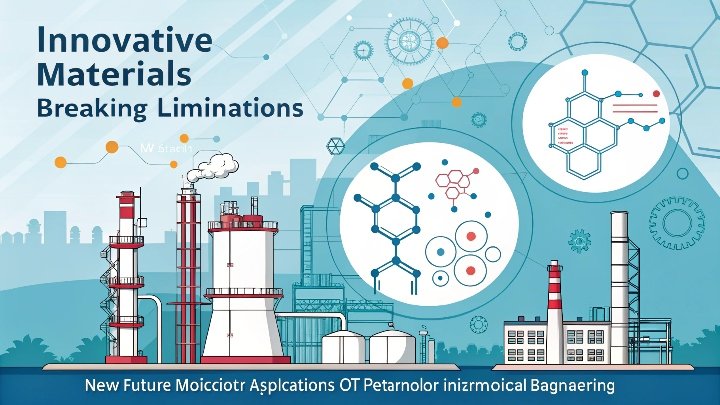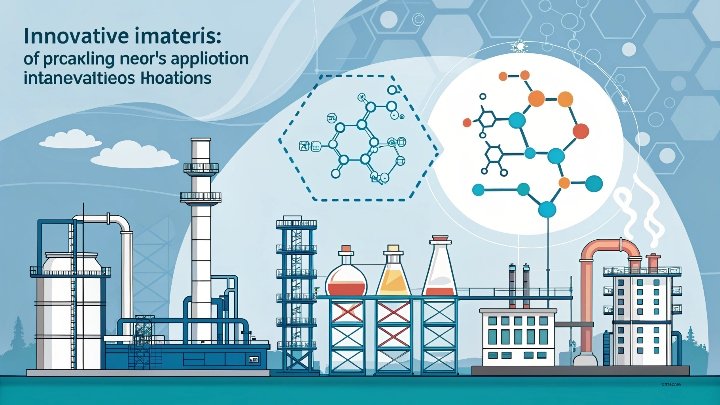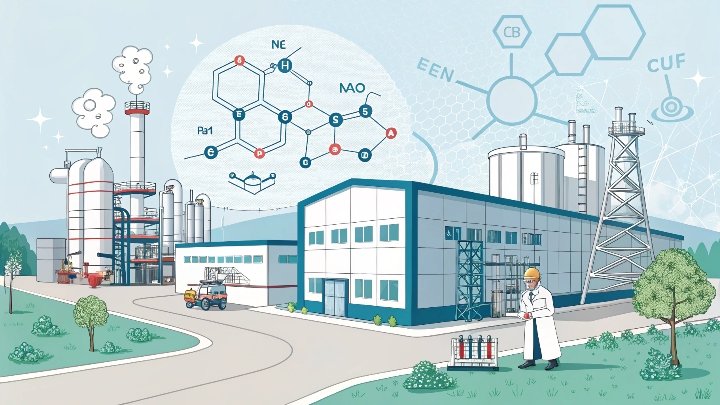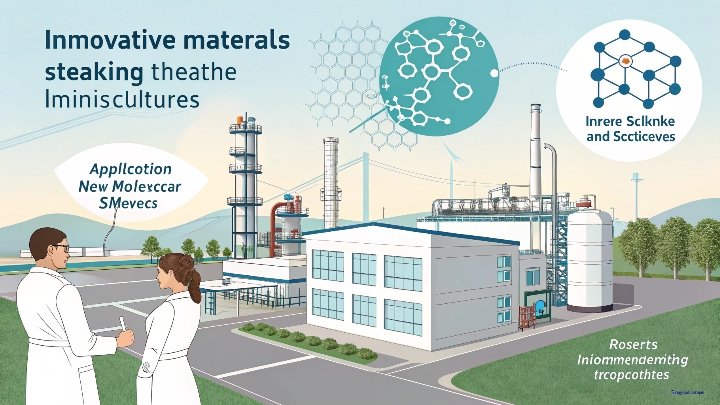I see endless delays from old molecular sieves. I feel frustration from restricted pores and weak stability. I want a breakthrough that ignites a cleaner, more efficient future.
Molecular sieves are crucial in refining. Yet old designs limit throughput and hamper sustainability. New materials offer bigger pores, custom active sites, and better stability for advanced petrochemical processes. These breakthroughs promise improved efficiency, lower emissions, and greater adaptability.
I believe we are on the verge of a transformation. Let me explain why upgrading our tools is no longer optional and how novel molecular sieves can lead us to a better future.
Out with the Old, In with the New: Why Traditional Molecular Sieves Need an Upgrade?
I used to trust traditional molecular sieves. But then I saw their flaws in real-world refining. Now I believe it’s time to replace them with stronger, more flexible materials.
Older sieves often fall short with limited pore sizes. They fail to handle large hydrocarbons and degrade under harsh conditions. Their selectivity is also less than ideal. So we need an upgrade. New materials can handle bigger molecules, reduce fouling, and stand up to more extreme temperatures.
I remember working in a refinery that used older molecular sieves. They often clogged when we fed heavier feedstocks. They had small pore openings, which caused big molecules to get stuck or degrade inside the pores. That led to lower yields and slow processing times. Maintenance crews spent countless hours replacing or cleaning the sieves. Our production schedules ran over budget. We also saw higher energy usage because we had to heat the system more often to keep it stable.
I watched these challenges build up. Many operators complained about the lack of adaptability. If feed composition changed slightly, the performance of these sieves dipped dramatically. The older materials had limited selectivity, so they removed only certain types of impurities. Meanwhile, other problematic compounds slipped by. That compromised product quality. I also learned that these older sieves lost activity in harsh environments. They sometimes broke down under high temperatures or strong acids. That introduced downtime.
By examining these issues, I began to see the need for better solutions. Modern molecular sieves promise greater pore sizes and more uniform structures. They allow bigger molecules to move without blockages. They also offer improved thermal stability. This extends operational lifespans and reduces replacements. I feel excited about how modern sieves can help us approach sustainability goals. They can trap unwanted gases more efficiently and lower greenhouse emissions.
Table: Old vs. New Sieves
| Feature | Traditional Sieves | Next-Gen Sieves |
|---|---|---|
| Pore Size | Limited, small openings | Larger, tunable pores |
| Stability | Often weak under high temp or harsh pH | More robust against extreme conditions |
| Selectivity | Narrow range | Broad or adjustable for specific molecules |
| Energy Efficiency | Higher energy demands | Lower regeneration or operating costs |
| Sustainability | Fewer eco-friendly options | Potential for greener processes |
I see how this table highlights the key differences. Traditional sieves may still have a place in simpler operations. But modern industry demands more advanced features. Larger pores, adjustable selectivity, and stronger stability are must-haves now. I feel that these new sieves are the path forward for any forward-thinking refiner. They offer better performance, more efficient throughput, and a clearer route to green goals. That is why I believe it is time to retire older sieves and move to the next level.
Meet the Next Generation: Supercharged Molecular Sieves for a Sustainable Future?
I first heard about new molecular sieves that adapt to different conditions. I saw how they handle bigger molecules and switch selectivity on demand. That made me hopeful.
These next-generation sieves have larger pores and flexible frameworks. They let heavy hydrocarbons flow with ease. They also feature customizable active sites for more precise catalysis. Their unique structures reduce energy consumption and enhance sustainability. That means improved refining outcomes, lower carbon footprints, and greater adaptability for modern industries.
I once visited a lab that specialized in advanced molecular sieve development. I was amazed by the level of engineering that went into each new material. Researchers manipulated the chemical composition to create adjustable pore sizes, ensuring that even bulky molecules could pass through. They also tested frameworks that change structure under different temperatures or pressures. This flexibility opened doors to more nuanced processes. Instead of forcing conditions to match the sieve, these new sieves adapted to the feed.
I saw experiments that targeted sustainability head-on. The researchers designed sieves with reactive sites that captured carbon dioxide more efficiently. That approach not only reduced greenhouse emissions, but it also allowed for potential reuse of captured CO2 in other processes. I also noticed how energy demands dropped. Because these materials were more selective, we did not need intense operating conditions to separate desired products from impurities. We used lower temperatures or gentler pressures, saving costs and cutting environmental impact.
I found it inspiring that these new sieves could help refine heavy oils and reduce waste. In some tests, the catalysts inside the pores broke down larger hydrocarbons faster. That allowed more valuable products, like diesel or gasoline, to form. Traditional methods require multiple processing steps. But these advanced sieves combined separation and reaction in one stage. That streamlined the workflow and saved resources. I am convinced that these smart materials can transform the refining landscape.
Table: Key Features of Next-Gen Sieves
| Feature | Benefit |
|---|---|
| Adaptive Frameworks | Adjust to varying conditions |
| Larger Pore Sizes | Handle bigger molecules with ease |
| Smart Reactive Sites | Capture CO2 or break down heavy oils |
| Lower Energy Requirements | Reduce operating costs and emissions |
| Multifunctional Applications | Combine separation and catalysis |
I believe these new sieves will lead us toward a greener future. By capturing emissions more effectively and streamlining refining steps, they pave the way for cleaner production. They also protect investment by offering longer lifespans and less frequent replacements. I see them as a powerful ally for petrochemicals, bridging the gap between our current needs and a more sustainable tomorrow.
From Lab to Industry: The Road Ahead for Novel Molecular Sieves?
I once saw brilliant ideas in a research lab stall during scale-up. I want to share how we can move these breakthroughs from test tubes to real refining operations.
Novel molecular sieves need real-world validation. Companies must scale production, control costs, and prove durability. Environmental regulations and evolving feedstocks add complexity. But collaboration among researchers, manufacturers, and end-users drives progress. Step by step, these materials will overcome hurdles and become standard tools in petrochemical refining.
I remember when I first tried to integrate a next-gen sieve into a pilot plant. The challenge was ensuring consistent pore structure at large volumes. Small batches were easy to control, but industrial-scale production exposed variations in raw materials, temperature, and pressure. Those differences caused slight shifts in the final product. We had to refine synthesis protocols, invest in better quality control, and standardize procedures across different facilities. That required close cooperation between chemists, engineers, and production managers.
I learned that cost control also becomes a big factor. Some of these advanced sieves use exotic metals or complex manufacturing steps. That leads to higher prices. End-users hesitate to pay a premium unless they see clear returns on investment. So we performed extensive life-cycle analyses. We checked if the improved performance, lower energy usage, and extended service life justified the cost. Often, we found that these new materials paid for themselves over time. They reduced downtime, saved energy, and boosted productivity.
Durability was another concern. We tested these sieves in high-temperature reactors, strong acid environments, and continuous flow conditions to simulate real refining processes. We discovered that the best materials could maintain performance for longer periods than older sieves. That means fewer changeouts and less production disruption. But not all novel sieves passed these tests. Some materials that looked great in the lab faltered in real conditions. This underlined the need for thorough pilot testing, rigorous quality standards, and constant iteration.
Despite these obstacles, I see many success stories. Collaboration among academic labs, industrial partners, and regulatory agencies paves the way for smoother adoption. Companies run pilot programs that gather data on performance, safety, and environmental impact. They share results with regulators, which speeds up approvals and acceptance. I have witnessed how each successful pilot site encourages others to follow suit. That momentum drives further research funding and sparks healthy competition among manufacturers to develop even better sieves.
Table: Key Scale-Up Challenges and Solutions
| Challenge | Issue | Possible Solution |
|---|---|---|
| Production Scale | Maintaining pore structure at volume | Refined synthesis protocols |
| Cost Control | High material or process expense | Life-cycle analysis and ROI assessment |
| Durability | Degradation under harsh conditions | Advanced testing and robust materials |
| Regulatory Hurdles | Approvals, safety, environmental checks | Early data sharing with authorities |
| Market Acceptance | Hesitance to adopt new technology | Pilot programs and success stories |
I believe that as we address these challenges, novel molecular sieves will transform the petrochemical sector. Their performance enhancements, sustainability gains, and adaptability make them a compelling choice. I have witnessed small breakthroughs blossom into industry-wide changes. With more collaboration, consistent testing, and incremental improvements, these new sieves will become mainstays in refining. That is the path I see for the future.
Conclusion
I see next-gen molecular sieves driving efficiency, sustainability, and innovation in petrochemicals. They can break old limits and pave the way for a cleaner, more dynamic refining era.






